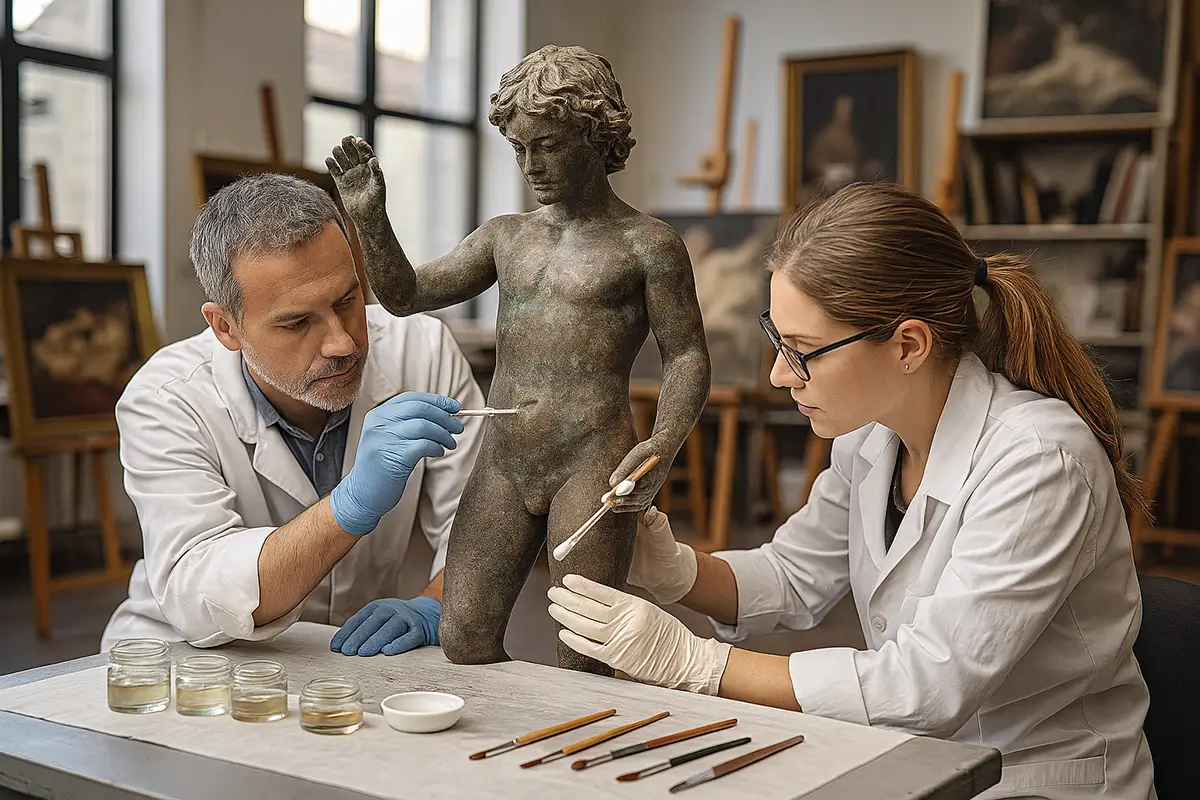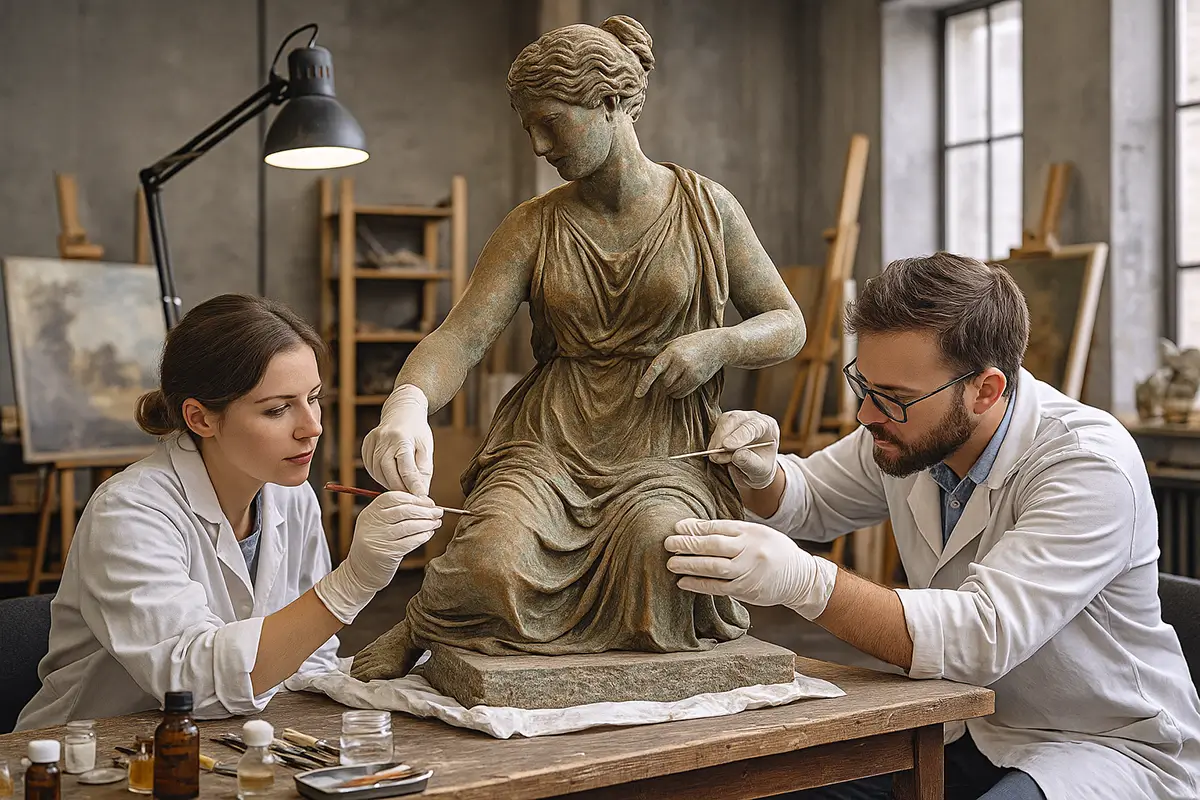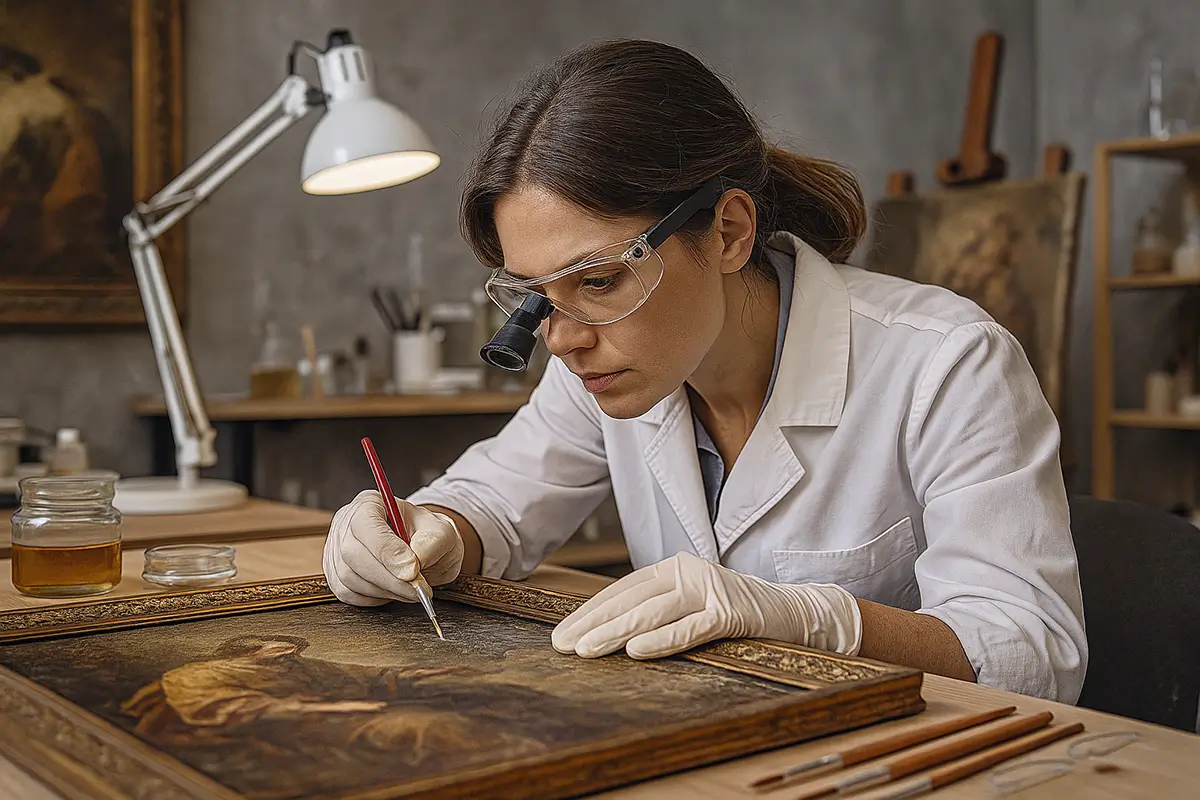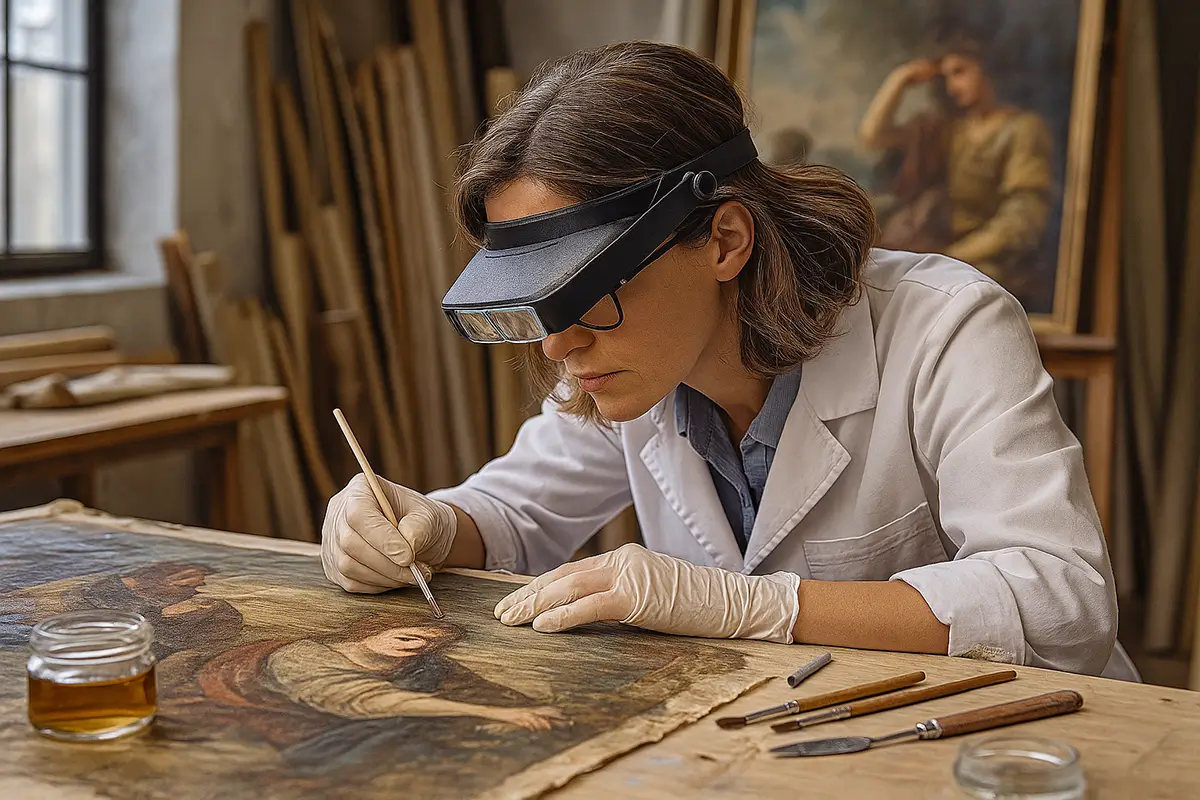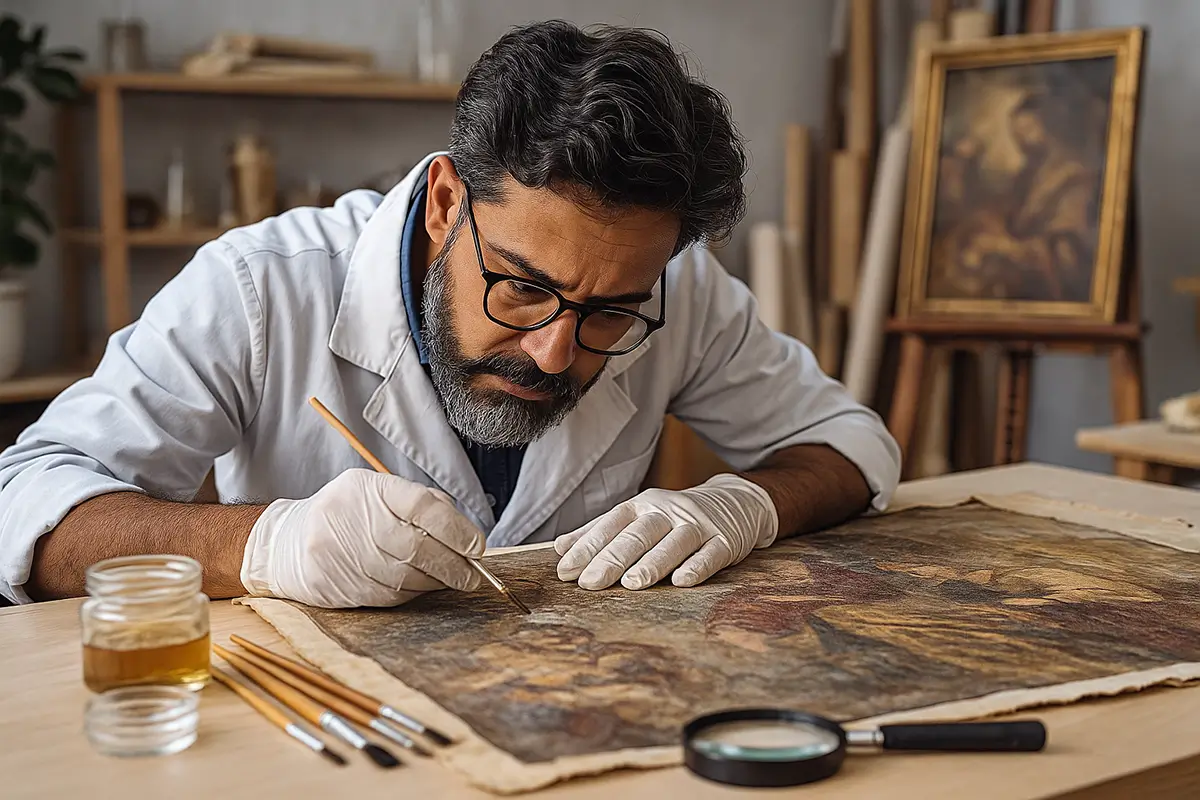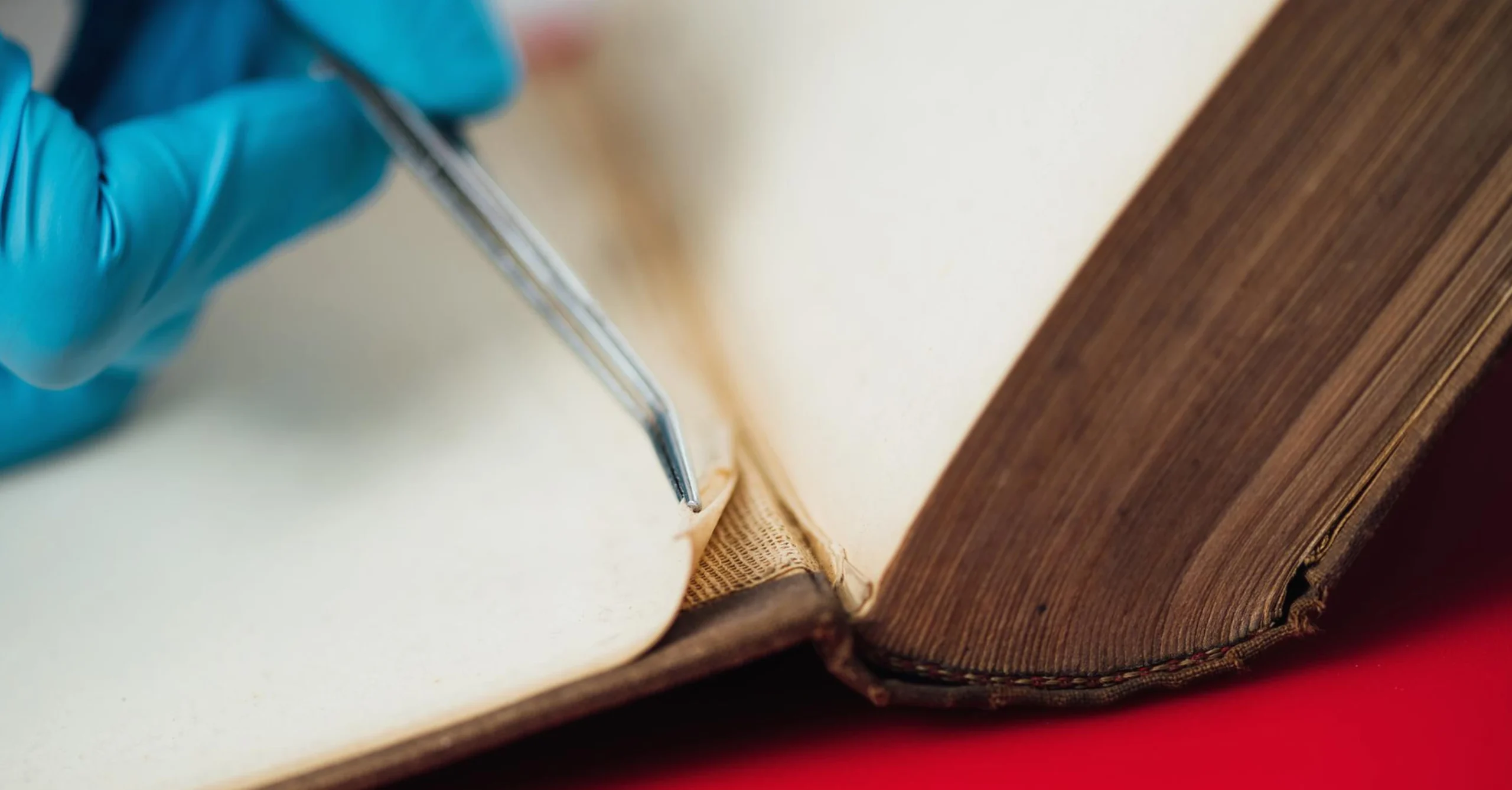Introduction: Protecting the most fragile treasures
A centuries-old handwoven textile. A miniature painting on delicate paper. A manuscript written on palm leaf or handmade parchment. These fragile media are among India’s richest cultural treasures—and also the most vulnerable.
Unlike stone or metal, textiles and paper deteriorate quickly when exposed to light, humidity, pests, or handling. Conservation of these works requires specialised expertise that combines scientific methods with deep respect for heritage.
This article explores the unique challenges of conserving textiles and paper, the techniques used, and the best practices collectors, institutions, and corporates should adopt to protect fragile art for the future.
Why textiles and paper need specialised conservation
Vulnerability of textiles
- Fibres weaken naturally with age.
- Dyes fade under light.
- Insects such as moths and silverfish feed on organic fibres.
- Humidity causes mould and discolouration.
Vulnerability of paper
- Acidity in paper leads to brittleness.
- Ink and pigments can fade or bleed.
- Exposure to light accelerates yellowing.
- High humidity encourages foxing and mould.
Because these materials are inherently unstable, preventive care and conservation are essential.
Textile conservation: Techniques and approaches
1. Condition assessment
- Identifies fibre strength, dye stability, and structural integrity.
- Examines previous repairs or storage methods.
2. Cleaning
- Dry cleaning methods: Gentle brushing or vacuuming with soft attachments.
- Wet cleaning (rare): Only under controlled lab conditions, to stabilise fibres.
3. Stabilisation
- Weak textiles may be supported with backing fabrics.
- Tears or holes are reinforced with conservation stitching.
4. Mounting and display
- Use padded mounts to reduce stress.
- Avoid adhesives that can damage fibres.
- Light exposure kept minimal—ideally under 50 lux.
5. Storage
- Store flat where possible, not folded.
- Use acid-free tissue and boxes.
- Control pests through integrated pest management.
Paper conservation: Techniques and approaches
1. Condition assessment
- Identify acidity, brittleness, ink fading, and previous damages.
2. Surface cleaning
- Soft brushes and erasers remove dirt.
- No harsh rubbing to avoid abrasion.
3. Deacidification
- Neutralises acidic content, slowing deterioration.
- Often uses aqueous or non-aqueous chemical treatments.
4. Repair
- Tears are mended using Japanese tissue and wheat starch paste.
- Missing areas may be filled with sympathetic but distinguishable paper.
5. Mounting and storage
- Use acid-free mounts, folders, and boxes.
- Keep paper away from direct light and fluctuating humidity.
Conservation of manuscripts and rare books
India’s heritage includes palm-leaf manuscripts, ancient scrolls, and early printed books. Conservation here involves:
- Cleaning without disturbing inks or dyes.
- Flattening distorted leaves with humidification chambers.
- Encapsulation in transparent archival polyester sleeves.
- Digitisation for access, reducing physical handling.
Case examples
Case 1: Textile collection in Jaipur
A palace-owned collection of historic textiles showed fading and insect damage. Conservation treatments included cleaning, reinforcement with backing fabrics, and climate-controlled storage. Today, the collection is displayed periodically under low light, with rotation schedules.
Case 2: Manuscripts in Varanasi
Religious manuscripts written on palm leaf were deteriorating due to humidity. Conservators stabilised fibres, cleaned pages, and stored them in acid-free enclosures. Digitisation provided access without further physical wear.
Case 3: Corporate archival documents in Mumbai
A company’s century-old paper archives were yellowing and brittle. Professional deacidification treatments and archival storage revived the usability of records, preserving corporate heritage.
Role of valuation and insurance
For fragile media, valuation is closely tied to conservation:
- Condition issues directly impact financial value.
- Insurance coverage often requires proof of conservation efforts.
- Market credibility improves for works that are professionally conserved and documented.
Ethical considerations in textile and paper conservation
- Minimal intervention: Avoid over-cleaning or altering historic integrity.
- Reversibility: All treatments should be undoable by future conservators.
- Transparency: Document every intervention, including repairs and replacements.
- Respect for cultural significance: Especially important for manuscripts and religious objects.
Technology in fragile media conservation
Modern tools enhance conservation precision:
- Spectroscopy to analyse paper acidity.
- Infrared imaging to read faded manuscripts.
- Digital scanning for fragile documents.
- Humidity-controlled chambers for stabilising fibres.
- AI tools predicting degradation patterns in organic materials.
Best practices for collectors and institutions
- Control climate: Keep textiles and paper in stable, cool, dry conditions.
- Minimise handling: Use gloves, avoid folding textiles, and digitise fragile paper.
- Use archival materials: Acid-free, lignin-free folders, boxes, and tissue.
- Rotate displays: Limit light exposure with rotation schedules.
- Regular monitoring: Inspect periodically for pests, mould, or deterioration.
- Seek professional help: Avoid amateur cleaning or tape repairs.
The Indian context: Why urgent action is needed
- Many private collections are stored in wooden chests or damp cupboards, causing accelerated damage.
- Museums often lack climate-controlled storage, putting manuscripts and textiles at risk.
- Rising pollution levels in Indian cities increase chemical degradation rates.
- Without urgent preventive conservation, irreversible cultural losses could occur.
Future of textile and paper conservation in India
- Growing demand from collectors and corporates recognising fragile media’s value.
- Integration with digitisation—physical conservation paired with digital preservation.
- Specialised labs emerging in metros for paper and textile conservation.
- International collaborations bringing global standards into Indian practice.
Conclusion: Safeguarding fragility for the future
Textiles and paper may be the most fragile forms of art, but they are also among the most intimate carriers of culture—from family heirlooms to manuscripts shaping intellectual history.
Conservation of these works demands specialised knowledge, scientific tools, and ethical care. By adopting preventive measures, working with professionals, and investing in proper storage, collectors and institutions can ensure that these fragile treasures survive well into the future.
Learn more about our Art Conservation Services. At TurmericEarth, we specialise in textile and paper conservation, offering tailored solutions for fragile media—protecting heritage and ensuring that delicate art remains vibrant, authentic, and secure.



